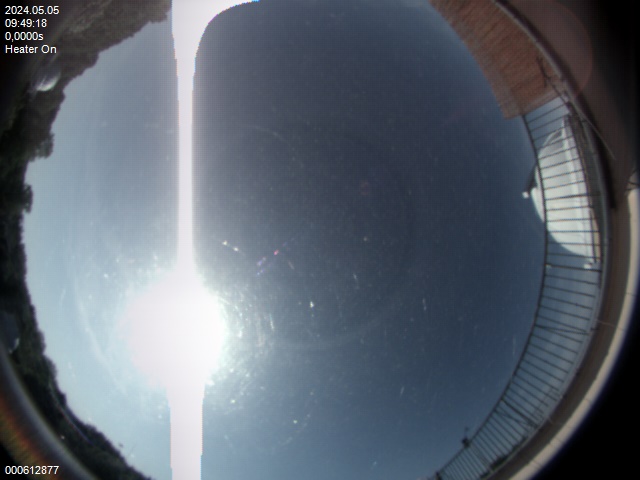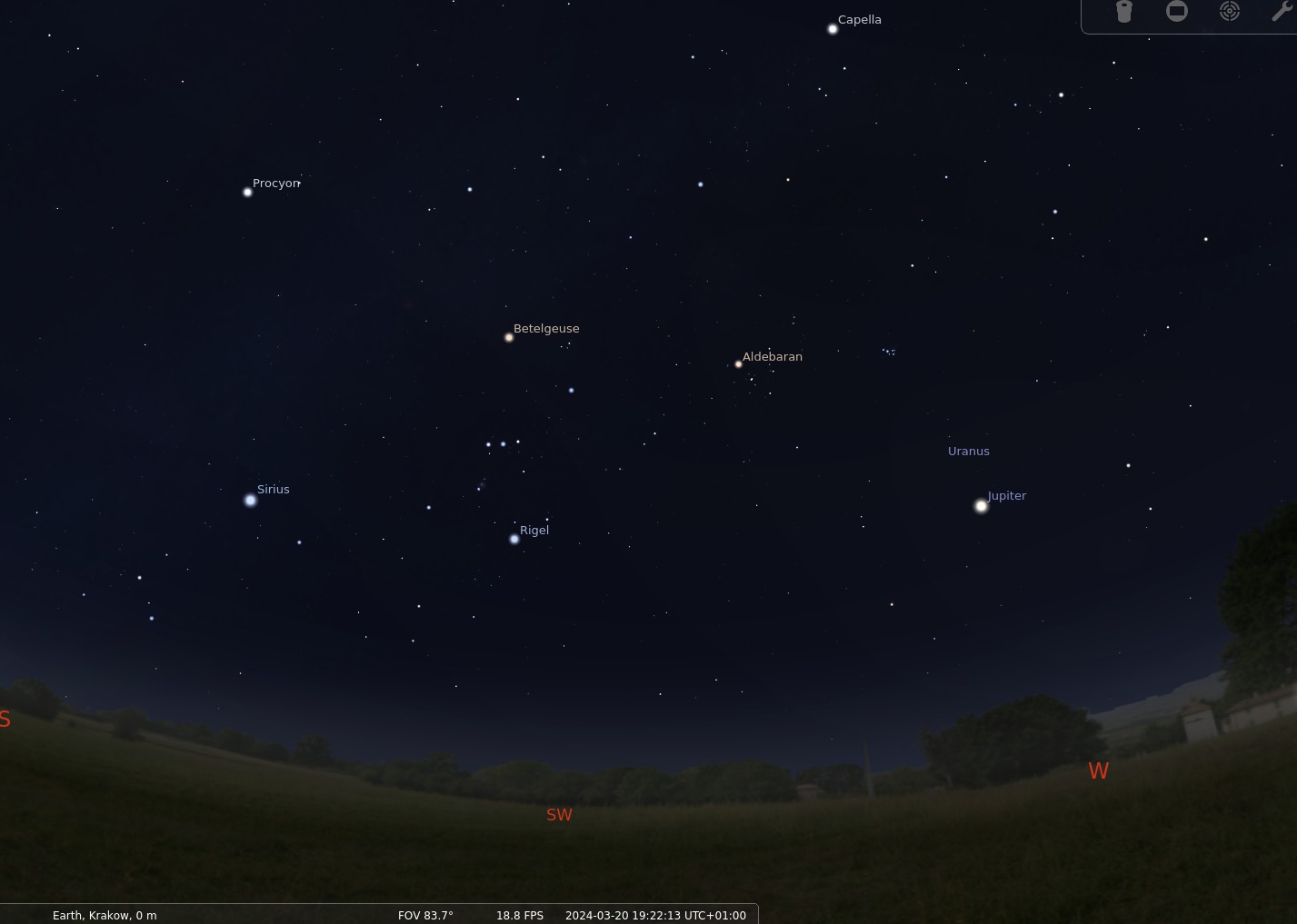Address: ul. Orla 171, 30-244 Kraków
Phone: 12 6238 620
For media & schools: press@oa.uj.edu.pl

Sky above: OAUJ, Kraków (live)

Be inspiration. Create the future.
S. Markowski - W obserwatorium
 Web Content Display
Web Content Display
Web Content Display
Web Content Display
 Navigation
Navigation
Navigation
Navigation
 Web Content Display
Web Content Display
Web Content Display
Web Content Display
Address: ul. Orla 171, 30-244 Kraków
Phone: 12 6238 620
For media & schools: press@oa.uj.edu.pl

Sky above: OAUJ, Kraków (live)

Be inspiration. Create the future.
S. Markowski - W obserwatorium
 Web Content Display
Web Content Display
Web Content Display
Web Content Display
Today, March 20, 2024, marked the beginning of astronomical spring in the northern hemisphere.
The Sun continues to rise higher and higher above the celestial equator - so that over the course of April, the day will increase by exactly 102 minutes in Lesser Poland. On Easter Monday, it rises in Cracow at 6:14 a.m. and sets at 7:14 p.m. On the last day of the month, the Sun will rise as early as 5:16 a.m. and set as late as 7:57 p.m., so the day will last 14 hours and 42 minutes; it will already be longer than the shortest day of the year by as much as 6 hours and 37 minutes, but even shorter by 101 minutes than the longest June day.
Sun
Our star is close to the maximum of activity in its 25th cycle. Mostly the Wolf number, which is the number of groups of spots and single spots on the Sun's disk, will be more than a hundred, which is especially pleasing for observers of our star. On April 8 there will be a total solar eclipse, unfortunately invisible in Europe. In addition, as every year, on April 22 we will celebrate World Earth Day - when looking at the sky, let's not forget about our Blue Planet and its problems with global warming.
Moon phases
In the first decade of the month, the Moon will not interfere with our nighttime stargazing, as the order of the Moon's phases will be as follows: last quarter on April 2 at 5:15 a.m., new moon on April 8 at 8:21 p.m., first quarter on April 15 at 9 p.m. on the 14th and full moon on April 24 at 01:49 a.m. The Moon will be closest to Earth (at perigee) on April 7 at 8 p.m., and the farthest from Earth (at apogee) on April 20 at 4.
Planets
Mercury will be visible very low above the horizon, in the western sky, until April 4, and then in the morning before sunrise, in the last decade of April. Venus is still visible until the middle of the month in the morning sky, and then it will hide for a longer time in the rays of our star, until mid-July, when it will again appear in the evening sky. Reddish Mars is visible in the morning in the eastern sky, preceding sunrise by more than an hour. Its rising time will steadily increase with the passing of this year's days. On April 11 in the morning at 5 o'clock Mars in the sky will wander close to Saturn.
Gaseous giant Jupiter will be visible in the western sky and systematically get shorter and shorter baths in the evening light until it drowns in the Sun's rays at the end of April, only to reappear in early July. Saturn is visible in April in the morning, preceding systematically with the passing of days and the end of the month by as little as two hours the sunrise. Meanwhile, to observe planets Uranus and Neptune, it is necessary to use a telescope. For this purpose, we invite interested visitors to neighborly MOA in Niepołomice.
Other phenomena
From April 15 to 25, meteors from the April Lyrid swarm are radiating. The meteors' radiant lies near Vega, the brightest star in the constellation of Lyra. The maximum of activity (up to 20 overflights per hour) falls on the night of April 21/22. This year the conditions for observing them are not good, as the Moon will be two days before full, interfering with observations of weaker meteors.

Based on a report by Adam Michalec
Map: Evening sky over Malopolska on March 20, 2024 (Stellarium).